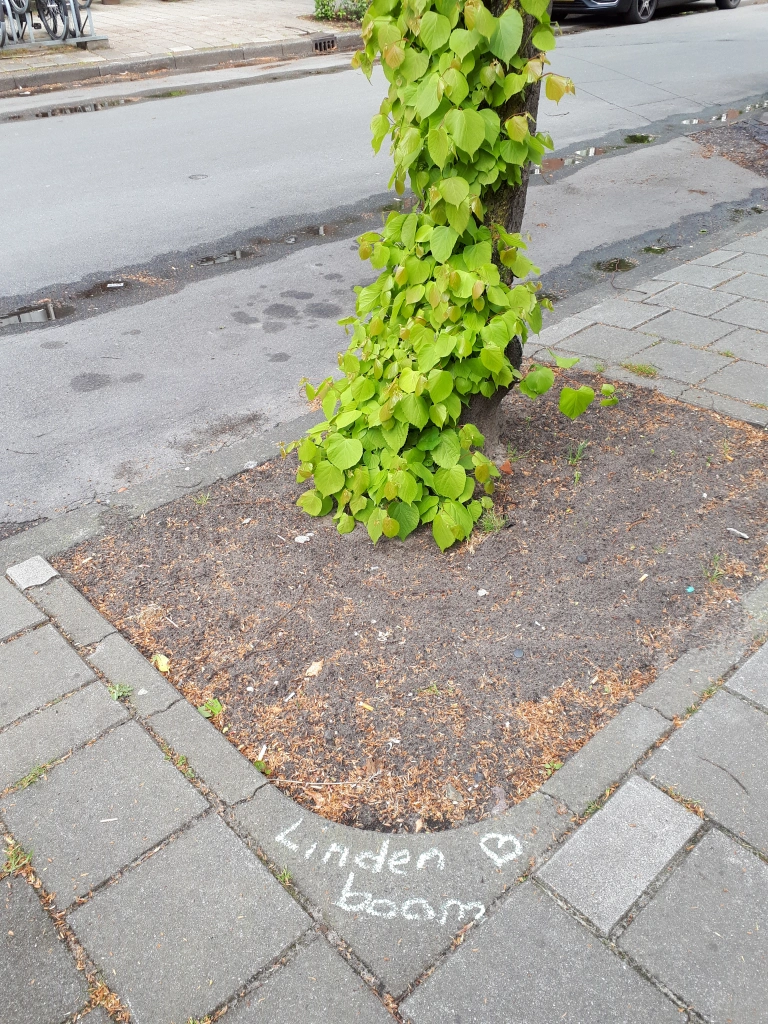Many city people tell me that they would love to grow herbs but they don’t have any space. I say that there is space in everyone’s home – even traveling homes – for living herbs. I also think that learning how to care for a plant is a skill that helps people to care for themselves, that can’t be a bad thing. I can’t recall where I heard or read it but “If you can keep a plant alive, you can keep your self alive” rings true to me. I think it was someone who’d been rather ill. Anyway, back to growing herbs in small spaces…

So where to squeeze in those precious plants? Here are some ideas, in no particular order:
1. House plants
I used to have a flat full of house plants and then we got a cat and I worried about him munching on poisonous plants so most of them disappeared. I mostly focus on plants outside my house but a home is much more pleasant when shared with plants so I always manage spider plants (great for the cat), Aloe vera and a pot of Basil or Parsley on a windowsill. All are so easy to grow and Aloe Vera is a herb which I think no home should be without. If you really really can’t get a plant into your minute studio apartment (which I can’t really believe!) how about placing some in the stairwell?

I recently bought a couple of books about growing tropicals and edibles indoors and have been inspired to try and retry a few interesting houseplants. So Ginger, Banana, Tea, Cofee, Orange, Pineapple and Lemongrass are currently germinating or growing in my home and several more exotics are planned. Don’t throw it grow it, by Deborah Peterson and Millicent Selsam is a really great resource book for unusual and edible houseplants. I’m really looking forward to a planned workshop with City Plot sometime soon, by Suzanne Oommen who knows plenty about caring for tropical edibles.
2. Balconies
I’m very lucky to have a big roof terrace which I pack full of herbs but I also grow quite a few herbs on my kitchen balcony; Horseradish, Parsley, Vervaine, Wormwood, Mint…
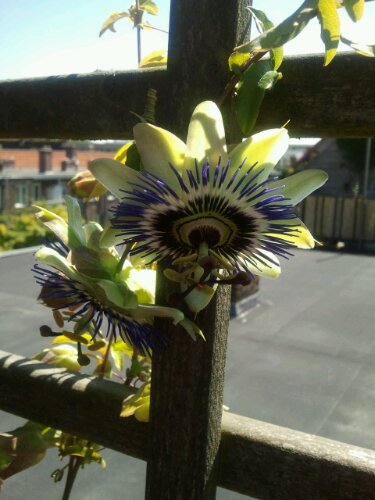
But mine is not a patch on my friend Elodie’s. Here are a couple of photos from her balcony in West Amsterdam. She and her husband cram as many plants as possible into the space they have and it looks really great. Not all of the plants are edible or herbal but a large number are.

Elodie, perhaps you could comment on this with a list of the plants you manage to grow on your south facing balcony? Her plants grow up the walls, trailing over the fence and there’s just about space to walk through to a cosy snug at the far end. Its very beautiful and quite an urban oasis. She has it fenced up to the ceiling to protect her cats from falling.
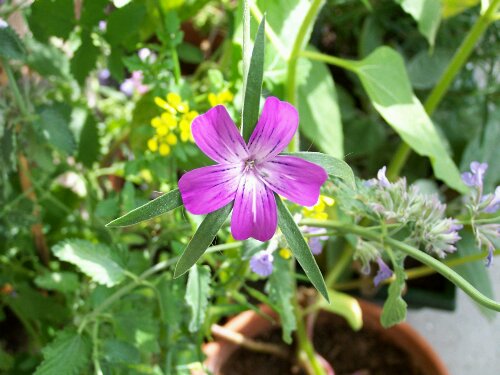
3. Outside in a Geveltuin (Pavement garden)
In Amsterdam you can ask the local council for a Geveltuin. If your immediate neighbours approve the plan you could soon be the happy carer of a tiny strip of sandy land, right beneath your apartment. Some districts even go so far as to give you a set of herbs or flowers to plant immediately. No such luck here in Oost Watergraafsmeer but my geveltuin was up and running just a couple of weeks from my initial visit to the Staadsdeelhuis, to find out how to apply. I continue to be very pleased with it. As mentioned before I have it planted with drought tolerant mediterranean herbs and they thrive there.
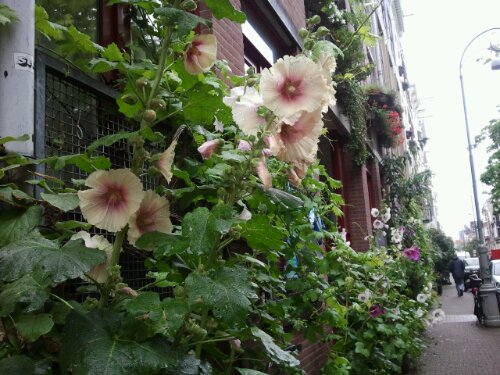
If a dugout pavement garden is not an option perhaps a small collection of herb pots outside your door would work?
4. Outside in public ground
If you don’t mind sneaking around a little, attracting suspicious looks or possibly loosing all your plants to others, why not plant your herbs in carefully chosen public spaces? This is a great option for those straggly looking supermarket bought herb pots, such as Parsley, which after time don’t look good enough for your kitchen windowledge but could manage a further year or more of growth, given a fresh source of fertile soil. If the plants fail outside at least they will fertilize the soil, rather than being incinerated along with your garbage.
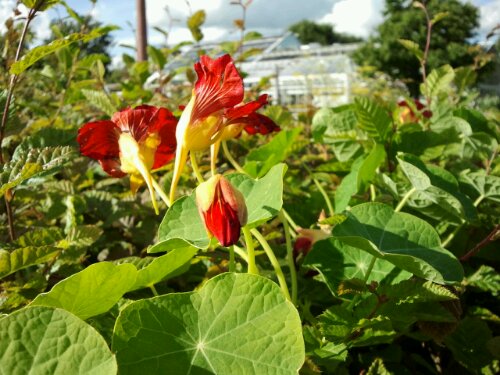
If you like the approach you could get busy with some Nasturtiums, climbing through public hedges or planting herbs in tree pits close to your home or workplace. The options are endless.
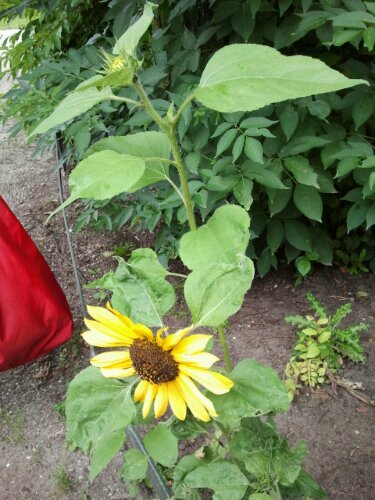
5. River of Herbs
If you are feeling public spirited and also want to encourage insect pollinators, why not add to the River of Herbs and plant a little, or large, Urban Herb Meadow and label it as such. More information as this develops but the Meadows are for everyone to benefit from. The herbs planted should be safe and be insect pollinated. If you’re uncertain of how to know that, go for pretty flowering culinary herbs and you won’t go far wrong.

So these are my thoughts on growing herbs when you live on a small place. Would you like to add to them?
5/8/12 Update: Here’s the list of herbs which Eldoie grows on her balcony at the moment:
Herbs’.
Sage
Rosemary
Parsly
Cilentro/ Coriander
Oregano
Basil
Dille
Mint
Rue
Verbena
Lavender
Catnip
Nasturtium
Nigella
Comfrey
Campanula
Malva
Geraniums
Portaluca
Dahlia
Fern
Yarrow
Duizendschoon
Sedum
En tabaksplant from greece Nixtum Lululum
And lots of Peturnias
hosta
Englishgrass
Tomato’s
Strawberries
And yes we still fit on the matras all 4 of us are going to enjoy our Saturday in the sun !



